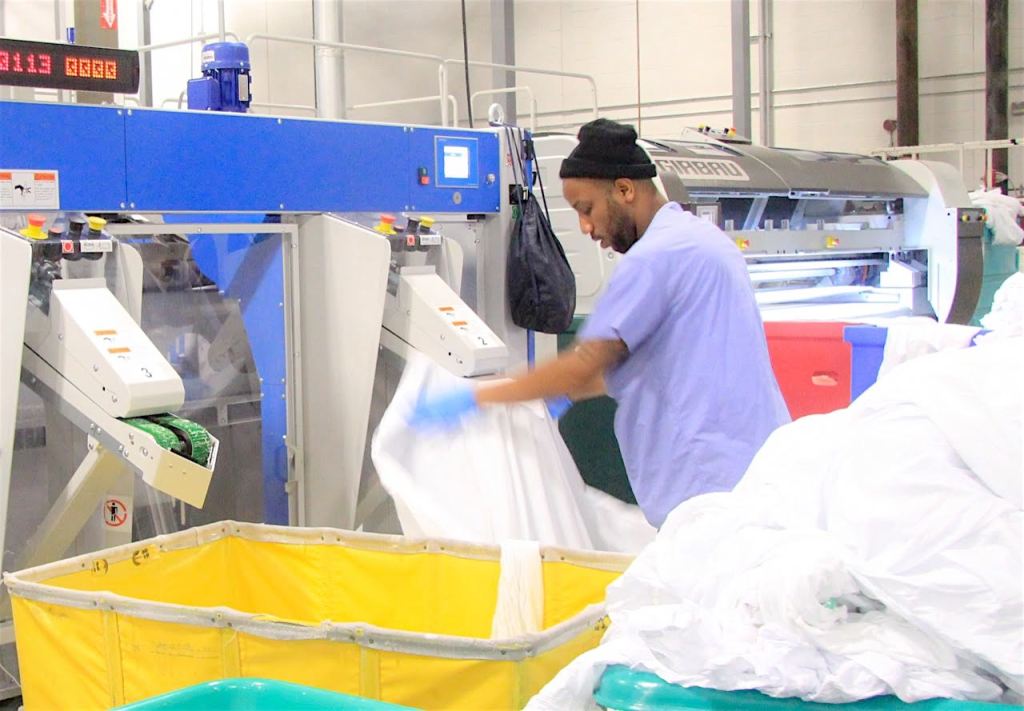While thinking about the rough flu season that Georgia had this year, I wondered about something: How do hospitals keep everything running smoothly when they are overwhelmed with patients who are contagious?
What about things that have to be changed regularly — like linens, sheets, pillowcases and towels? How do hospitals manage that?
I contacted Grady Health System in Atlanta to find out how they make certain that clean linens are always available.

“It’s a lot more involved than you would expect, that’s for sure,” said Lori M. Wood, director of emergency management for Grady.
“I had no concept of how involved linens could be,” Wood said, reflecting on the things she learned when she took charge of Grady’s support services, which among other things provide safe linens for all staffers and patients.
Wood said it was difficult to keep adequate supplies of fresh linen during the worst of this year’s influenza attack. But the people the system hired for that purpose got the job done.
“It’s Grady’s [contracted] linen service that makes clean linens happen,” Wood said. “They were able to step up to the demands during the worst of the season.”
Rules and regulations on clean linen for health care facilities are set forth by an accrediting agency, the Healthcare Laundry Accreditation Council (HLAC). Many health facilities do not process their own linens, but instead use accredited services.
HLAC, a nonprofit organization, inspects and accredits laundries supplying reusable ‘‘textiles’’ for hospitals, nursing homes and other health care facilities. It specifies the steps in the process, from the receipt of soiled linens to the delivery of sterile textile packs for use in surgical and other medical settings.
“Improperly laundered [linens] can act as a vehicle for the transfer of pathogens among patients and hospital workers,” said John Scherberger, past board president of the HLAC.
“Most of us are able to ward off the worst of the worst, but the sickest patients can be the most vulnerable,” Scherberger said. “Patients don’t normally think about infection control and hospital laundry until something unusual happens. It would likely take a specific outbreak with new infectious diseases, whether they are bacteria, viruses or fungi-based.”
Improved safety standards
Lynne Sehulster, a retired infectious disease epidemiologist, said that “outbreaks of infectious disease associated with laundered [items] are fairly rare.”
A Lawrenceville resident, Sehulster spent 20 years serving as an expert on environmental infection control with the CDC.
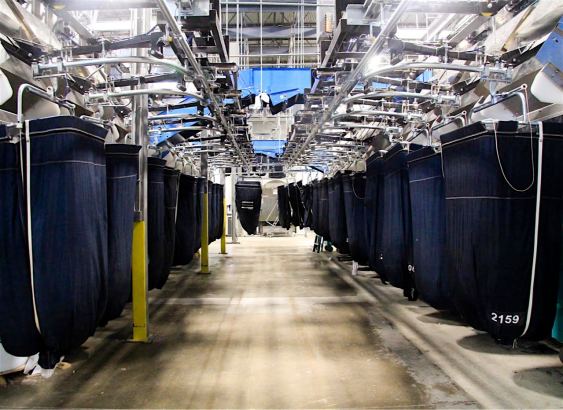
Billions of pounds of linens are laundered annually in this country, and yet cases of laundry-related infections are seldom encountered, according to Sehulster.
In the last century, linens at medical facilities were handled “in house,” she said. Hospitals had massive laundry rooms, usually in their basements. Today, the larger institutions in urban and suburban areas generally send their laundry out.
“We outsource linen reprocessing to a health-care-certified commercial linen service,” said Susan Harp, an infection control coordinator at Piedmont Columbus Regional Hospital.
Harp said the laundry service uses a process that treats all linen as potentially infectious, and then renders it safe for use. “In addition to chemical additives and temperature in the wash cycle, the drying cycle [with its high temperatures] also sanitizes the linens.”
It sounds simple, but the process is very complicated.
I visited an HLAC-accredited facility, NOVO Health Services, in Atlanta, and saw what happens. It’s a finely tuned system of machines connected to an internal data monitoring and processing network, all working together to ensure safe laundry.
The purpose is to produce the cleanest linens possible for use in a health care setting.
NOVO President and CEO Karl Fillip said, “We are preparing for the future.”
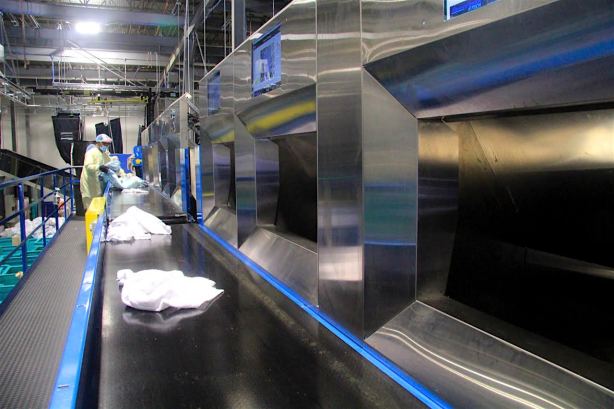
He knows that linens are part of any disaster response, and he and his staff work constantly to be prepared for the next emergency. Clean laundry — like food, water, shelter and communications — is something people need after a disaster, and they need it in a hurry.
Fillip said he had a chance to prove the value of advanced planning when Hurricane Irma formed last year. It didn’t make the news, but clean hospital linens, from NOVO in Atlanta, were transported to Florida ahead of time as part of disaster preparation.
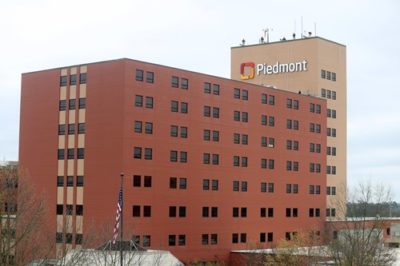
A pandemic is a different kind of disaster. Harp of Piedmont Columbus Regional said that in such a crisis, hospitals must follow an even more stringent process.
In a disease-related disaster, some linens may have to be classified as “Category A.’’ That means they have been exposed to an infectious substance that can cause permanent disability, serious illness or death in previously healthy people. Such items are considered too risky to be cleaned or reused, Harp said.
“Those are the linens that must be destroyed,” she said.
A scary but rare phenomenon
A 2015 report by the Society for Healthcare Epidemiology of America said that just 12 outbreaks related to linens had been reported worldwide in the past four decades.
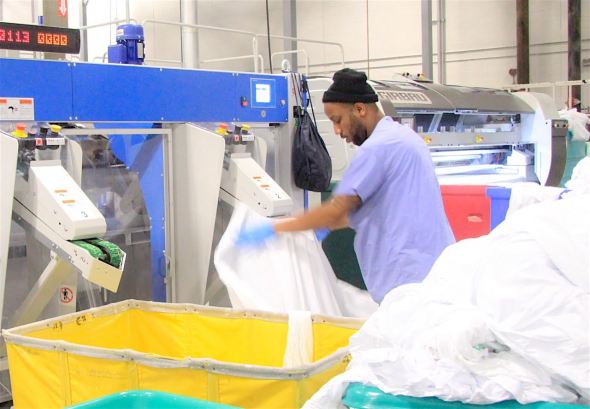
The causes vary. Studies have identified such problems as inadvertent exposure of clean textiles to environmental contamination, including exposure to dust in storage areas, or a process failure during laundering.
One of the worst events involving unsafe linen took place 10 years ago. A New Orleans hospital was held responsible for five pediatric deaths, which were attributed to a flesh-eating fungal infection, according to multiple reports.
After that tragedy, the hospital changed linen suppliers, disinfected its storage areas and began sterilizing linens for high-risk patients.
Such a linen-related infection problem is very unusual, said Dr. Tom Chiller, a CDC infectious disease expert.
“If you think about the millions of tons of linens that are used every day, it . . . seems like an exceedingly scarce phenomenon,” said Chiller. “And especially in the fungal world, it’s exceedingly rare considering how many sheets are going in and out of patients’ beds and how often they’re changed.”
Still, Chiller said, keeping linen free of pathogens “is something we’ve got to think about. Certainly the linen associations and others that deal with these things on a daily basis grapple with how best to clean those.”
Besides being HLAC accredited, there is a Hygienically Clean Certification available to hospitals, nursing homes and surgical centers — allowing laundry facilities to pass a series of qualifying biological tests and inspections using internationally recognized standards.
Hygienic standards for hospitals are high, and items that can’t be cleaned effectively after use are discarded.
“In today’s hospitals, many items used are deemed disposable,” said Gregory Cox, NOVO senior vice president. “The reason we can reuse linens is because of the safe practices we’ve established.’’
Judi Kanne, a registered nurse and freelance writer, combines her nursing and journalism backgrounds to write about public health. She lives in Atlanta.

